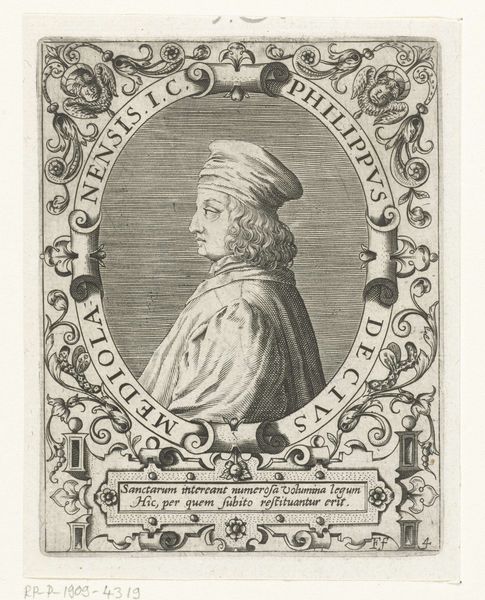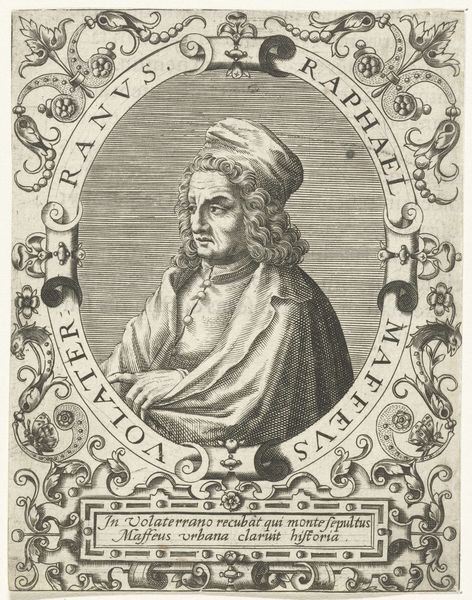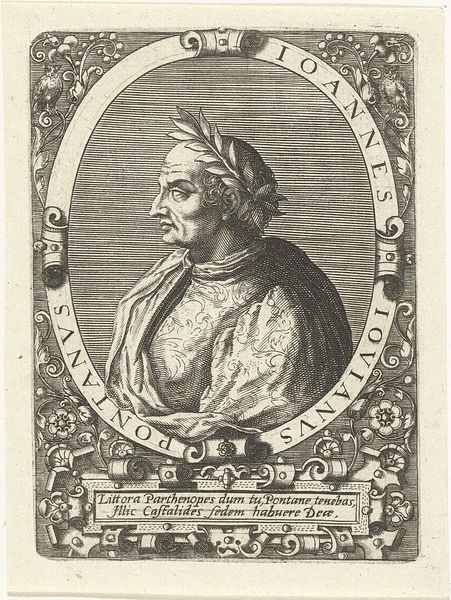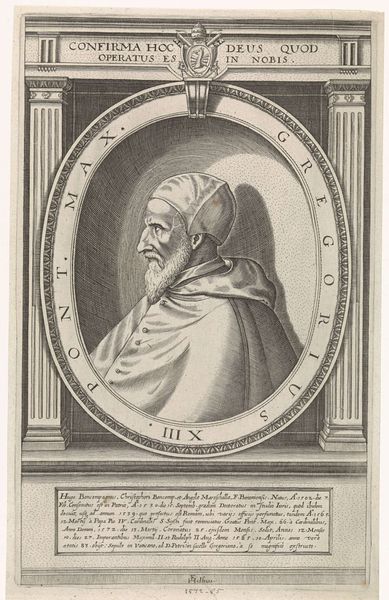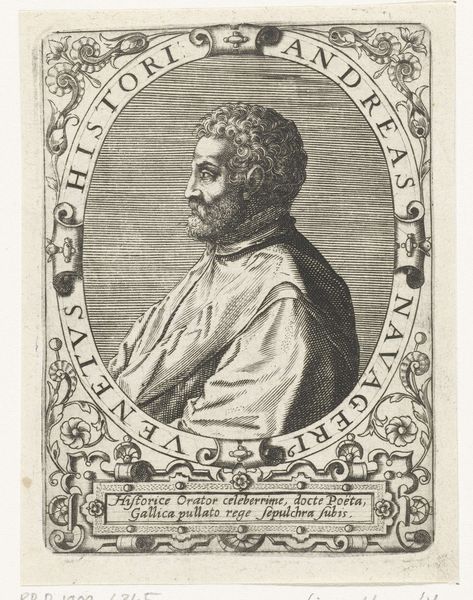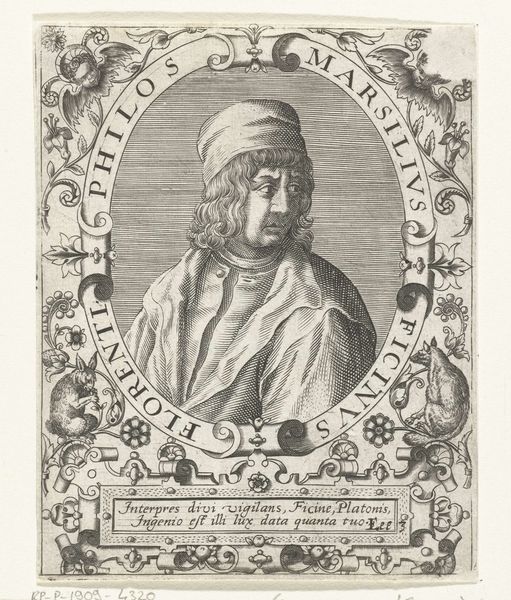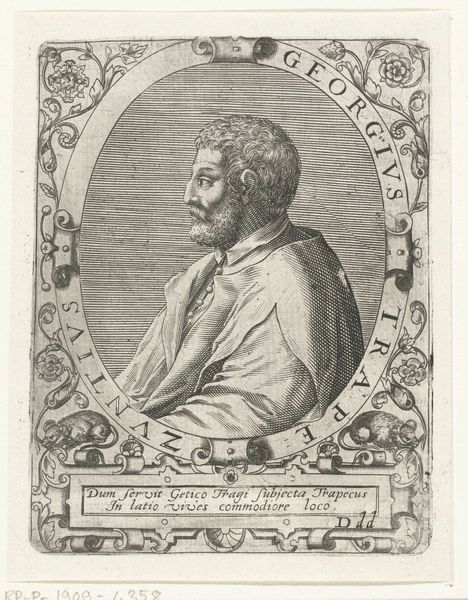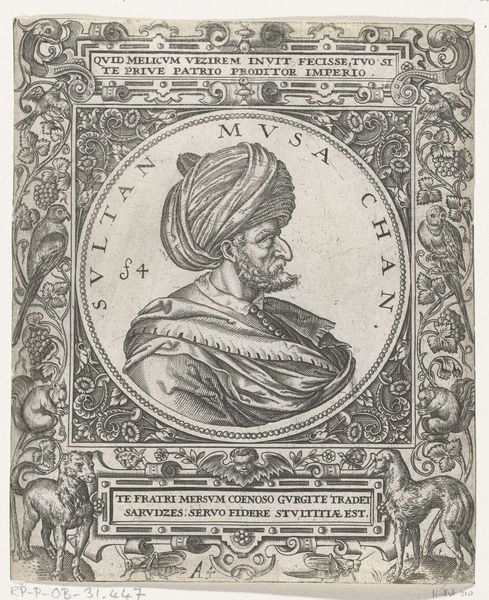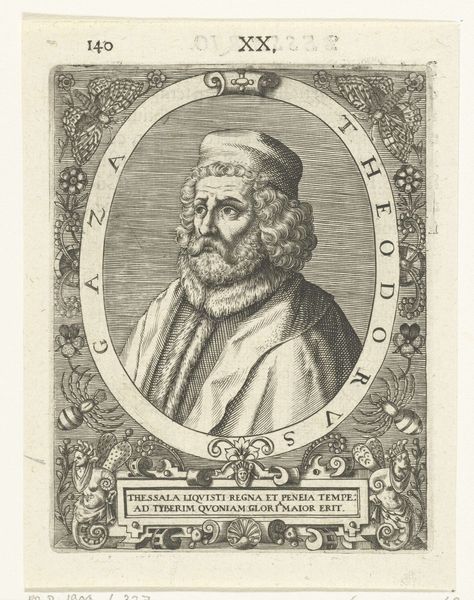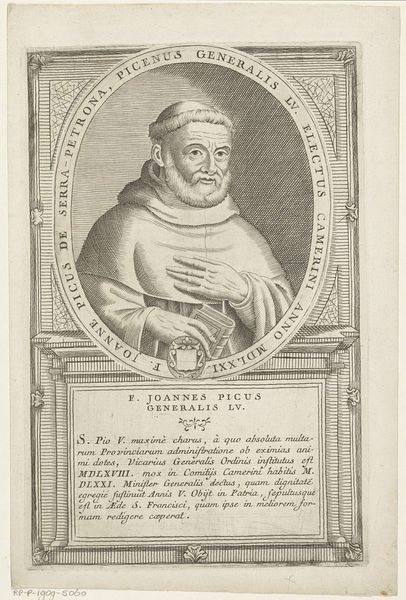
print, engraving
#
portrait
#
baroque
# print
#
old engraving style
#
mannerism
#
traditional style
#
line
#
history-painting
#
academic-art
#
engraving
Dimensions: height 140 mm, width 100 mm
Copyright: Rijks Museum: Open Domain
Curator: This is a portrait of Giasone del Maino, made sometime between 1597 and 1669 by Theodor de Bry. It’s an engraving, currently held at the Rijksmuseum. Editor: The stark lines create a rather serious, almost austere, atmosphere. It feels formal, deliberate, the way the sitter's face is rendered in profile...very controlled. Curator: Absolutely. The engraver’s precise application of line lends itself to a formal register. We might also think about the role of portraits in conveying status during this era. Consider too how the composition is broken up by its decorative frame. Editor: Ah, yes, the framing. Intricate flourishes that enclose the central oval. And the strange animals sitting below—what's that about? Curator: The frame, bustling with foliage and figures, directs attention. This decorative style recalls Mannerist and Baroque trends popular during that period. I suppose those fantastical creatures point to a kind of elevated prestige, hinting at the sitter’s stature through symbolism. They almost mimic the function of supporters or heraldic beasts that frame a crest, or royal shield. Editor: True. So, the meticulousness of the line, the profile view, the deliberate symbolism…it all points to the subject's significance in the context of his world. I also notice that the sitter's gaze avoids ours completely, but his is set forward in determination. Curator: A perspective enhanced by his slightly pursed lips. It projects authority and learnedness, aligning with his profession; del Maino was a renowned jurist. De Bry clearly chose to depict the sitter in a manner that would best reflect his intellectual prowess and civic virtue. Editor: So, we're not just seeing a man, but an ideal being communicated through visual language. Curator: Precisely! Editor: Considering the layers of composition, the portrait becomes a cultural artifact—a visual record of the values upheld during the period it was crafted. Thanks, this has been truly illuminating! Curator: My pleasure. It is always a worthwhile effort to unravel the historical threads woven into these artworks!
Comments
No comments
Be the first to comment and join the conversation on the ultimate creative platform.
